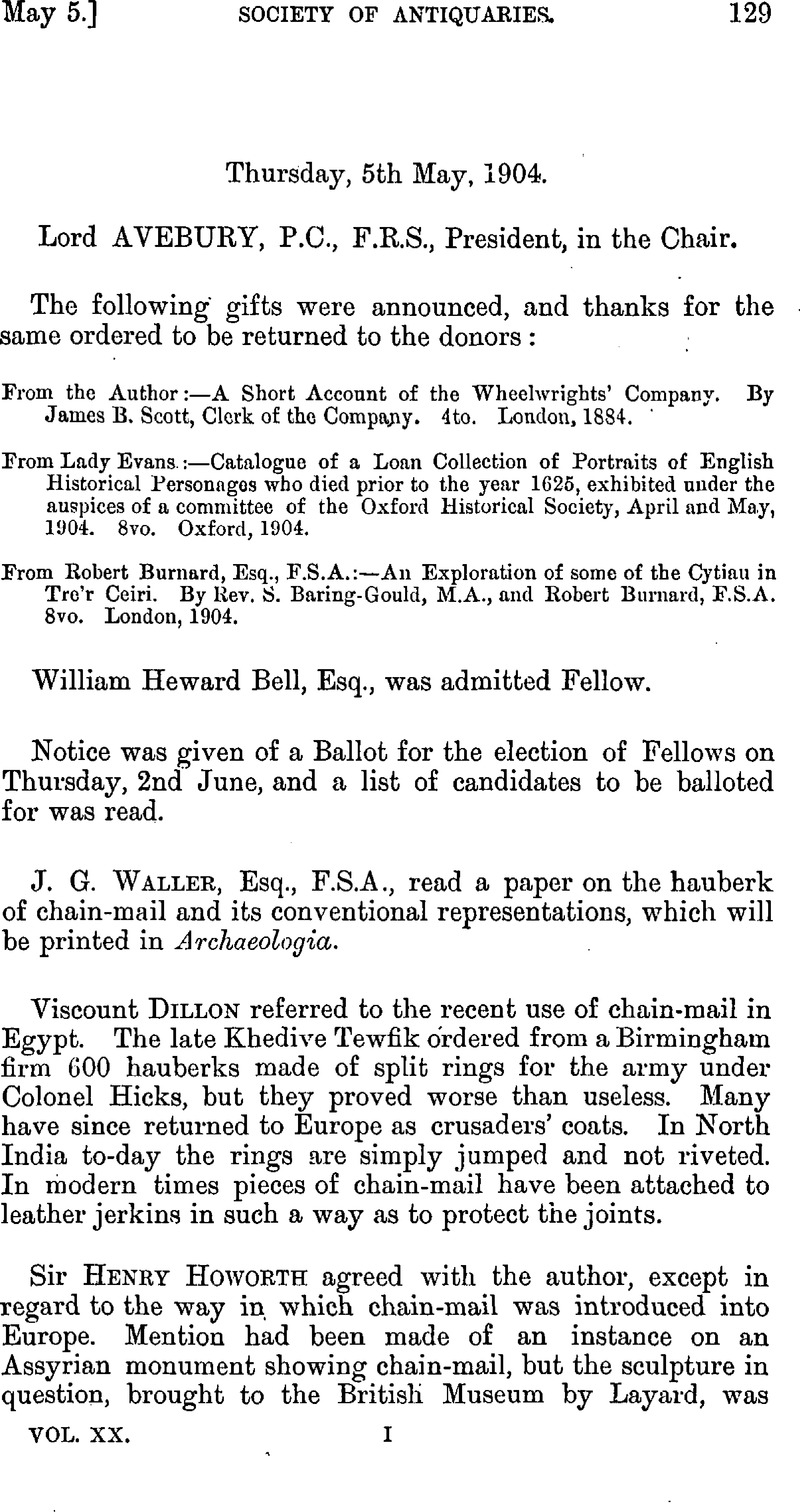No CrossRef data available.
Published online by Cambridge University Press: 10 May 2010

page 131 note * The term “diaper” is said to be derived from the town of Ipre (Ypres), which made diaper cloth a speciality.
page 132 note * Notably at Belfast and Lisburn, where a number of Huguenot families settled after the Revocation of the Edict of Nantes, and introduced the manufacture of linen and damask after the method and with the machinery then in use in the Low Countries.
page 133 note * Exhibited 10th April, 1902. See Proceedings, 2nd. S. xix. 86, for a full description.
page 136 note * It appears likely that the improving, widening, and enlarging of London Bridge, for which Acts of Parliament were granted in 1760–1768, is commemorated, or it may be connected with the coronation of George II.
page 137 note * 7th Ser. iii. 12–14.
page 137 note † In this war against the Turks Prince Eugene defeated an army of 180,000 men and took Belgrade.
page 138 note * Perhaps a little later.
page 138 note † This interesting example of early sixteenth-century damask was exhibited by the Rev. E. Farrer, F.S.A., 12th January, 1893. (Proceedings, 2nd S. xiv. 258.) It is of special importance as being essentially ecclesiastical in character, yet not without a touch of domestic life, as evidenced by the quaint symbolism that lurks beneath the homely portrayal of cat and mouse.